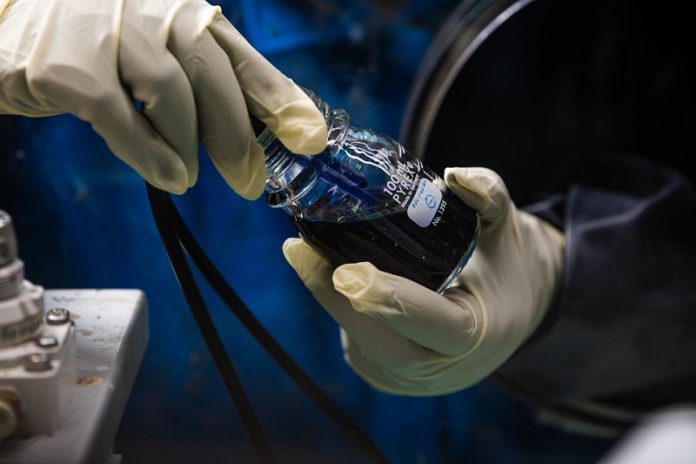
Scientists from the Department of Energy’s Pacific Northwest National Laboratory have made an exciting breakthrough in battery technology.
They have discovered that a simple sugar called β-cyclodextrin can enhance the capacity and lifespan of next-generation flow batteries, which are designed for electrical grid energy storage.
In a groundbreaking experiment, the flow battery maintained its ability to store and release energy for over a year of continuous charge and discharge, thanks to the addition of β-cyclodextrin.
Flow batteries work by using two chambers filled with different liquids to charge through an electrochemical reaction and store energy in chemical bonds.
When connected to an external circuit, they release the stored energy to power electrical devices.
Unlike solid-state batteries, flow batteries have external supply tanks continuously circulating liquid electrolyte, which acts as the “blood supply” for the system.
By scaling up flow batteries to the size of a football field or larger, they can serve as backup generators for the electric grid, making them an essential component of a decarbonization strategy for storing energy from renewable sources.
The need for new kinds of flow batteries arises from the desire to find more sustainable and easily obtainable materials.
Current commercial flow battery facilities rely on costly and hard-to-obtain mined minerals like vanadium. Researchers are therefore seeking alternative technologies that use common, easily synthesized, stable, and non-toxic materials.
In the recent study published in the journal Joule, the researchers introduced β-cyclodextrin, a derivative of starch, as an additive to the flow battery electrolyte.
They optimized the ratio of chemicals in the system, achieving a remarkable 60% increase in peak power. Furthermore, they cycled the battery for over a year, observing minimal loss of capacity before stopping the experiment due to tubing failure.
This achievement represents the first laboratory-scale flow battery experiment reporting over a year of continuous use with minimal capacity loss.
The sugar additive, β-cyclodextrin, acts as a catalyst to accelerate the electrochemical reaction that stores and releases energy in the flow battery.
It works while dissolved in the liquid electrolyte, eliminating the risk of solid particles dislodging and interfering with the system. This innovative approach enhances battery longevity and performance.
The research team’s work is part of a larger effort at Pacific Northwest National Laboratory to develop and test new technologies for grid-scale energy storage.
They plan to further improve the battery system by experimenting with similar compounds to β-cyclodextrin that have similar benefits but without making the liquid thicker.
The findings of this study hold promising implications for the future of renewable energy storage and grid reliability.
By harnessing the power of a common sugar, researchers have enhanced the capacity and lifespan of flow batteries, bringing us one step closer to achieving a sustainable and efficient energy storage solution.
Follow us on Twitter for more articles about this topic.



